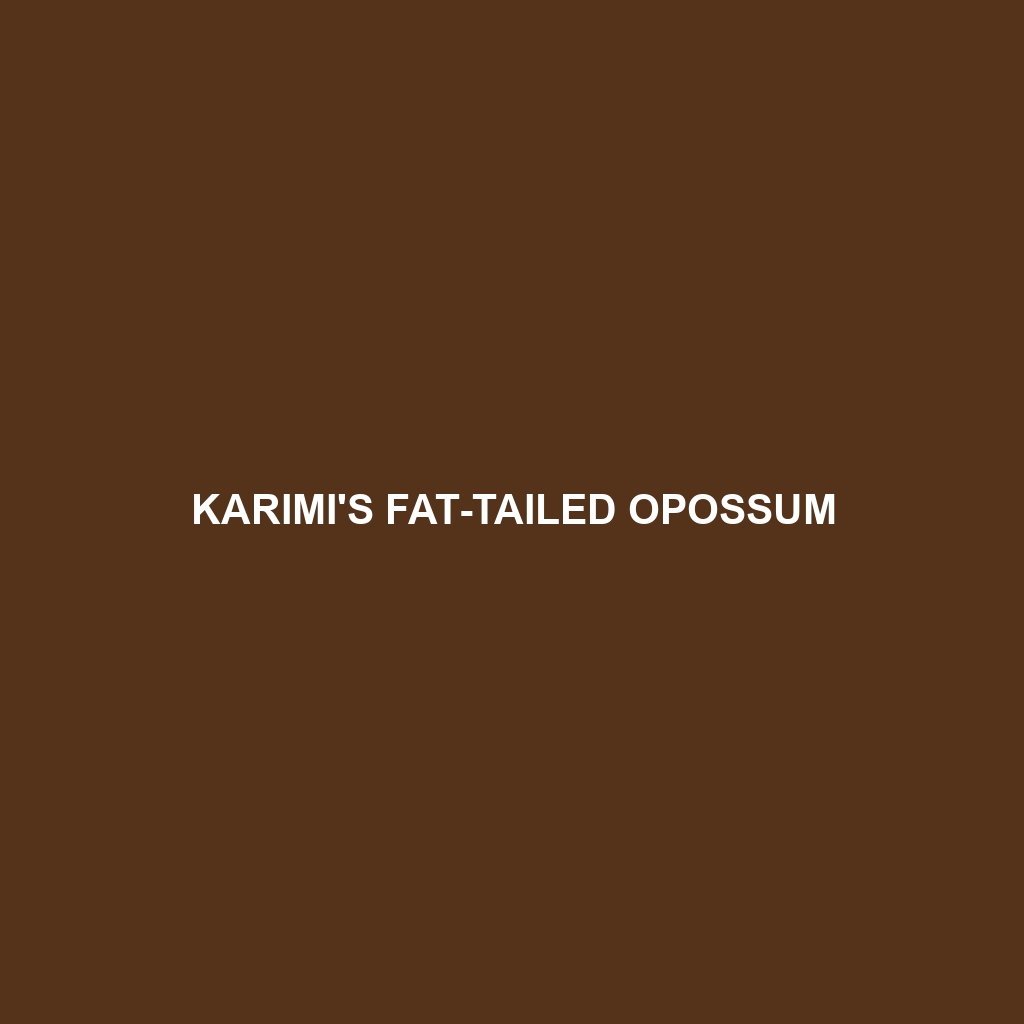Karimi’s Fat-tailed Opossum: A Comprehensive Overview
Karimi’s Fat-tailed Opossum (Thylamys karimii) is a small, nocturnal marsupial native to South America. Known for its distinctive fat-storing tail, this diminutive creature plays a significant role in its ecosystem. These opossums are fascinating for their unique adaptations and behaviors, making them a subject of interest for wildlife enthusiasts and researchers alike.
Physical Characteristics
Size: Karimi’s Fat-tailed Opossum typically measures about 15 cm (6 inches) in body length, with an additional 10-12 cm (4-5 inches) for the tail.
Coloration: The fur is generally grayish-brown on the back, with a lighter, almost white underbelly. Their faces often feature a contrasting dark mask around the eyes.
Special Features: The most distinctive feature is their tail, which can swell significantly as it stores fat. This adaptation is crucial for surviving periods of food scarcity.
Behaviors
Social Interactions: These opossums are mostly solitary creatures, coming together only for mating purposes. They are known to be territorial and use scent markings to establish their domain.
Feeding Habits: Karimi’s Fat-tailed Opossum is an omnivore, with a diet that includes insects, small vertebrates, fruits, and nectar. Their varied diet helps them adapt to different environmental conditions.
Ecological Roles: They are important for controlling insect populations and act as pollinators. Their feeding habits also help in seed dispersal, contributing to the health of their habitats.
Habitats
Geographical Range: These opossums are found in various parts of South America, particularly in arid and semi-arid regions.
Preferred Environment: They thrive in dry forests, shrublands, and rocky areas. Their burrows are often found in crevices, under rocks, or in hollow logs.
Adaptations to Habitat: Their fat-storing tail is an adaptation to the often erratic availability of food in their habitats. Additionally, their nocturnal nature helps them avoid predators and extreme daytime temperatures.
Conservation Status
Current Status: The conservation status of Karimi’s Fat-tailed Opossum is currently not well-documented, but habitat destruction poses a potential threat.
Threats: Habitat loss due to agriculture and urban development, as well as predation by domestic animals, are significant threats.
Conservation Efforts: Efforts to conserve their habitats are critical. Studies and surveys to better understand their population dynamics and ecological needs are ongoing.
Fascinating Fun Facts
Unique Adaptation: The ability to store fat in their tail is not just for energy; it also provides insulation against the cold.
Reproductive Strategy: Female opossums have a short gestation period of about two weeks, after which tiny, underdeveloped young continue to grow in the safety of the mother’s pouch.
Night Vision: Their large eyes and keen sense of smell are perfectly adapted to their nocturnal lifestyle, allowing them to navigate and hunt in the dark.
Karimi’s Fat-tailed Opossum is a remarkable example of nature’s adaptability and resilience. By understanding and appreciating these unique creatures, we can better appreciate the intricate web of life they are a part of and the importance of conserving their natural habitats.
